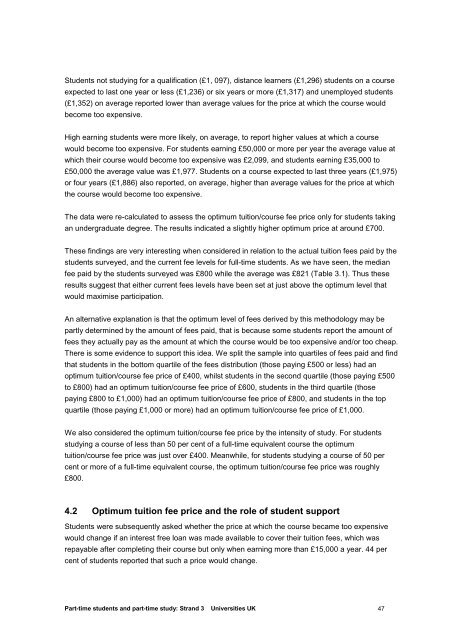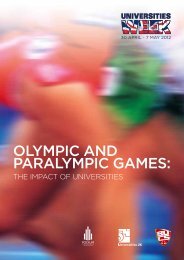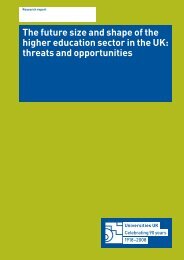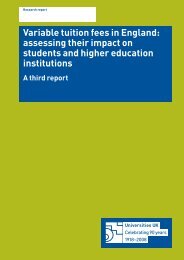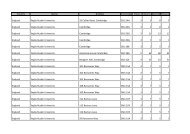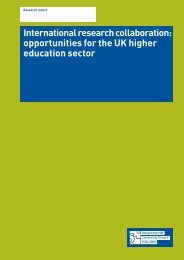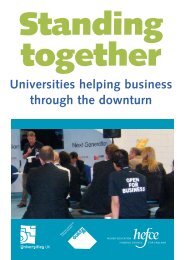Part-time Students And part-time Study In Higher ... - Universities UK
Part-time Students And part-time Study In Higher ... - Universities UK
Part-time Students And part-time Study In Higher ... - Universities UK
Create successful ePaper yourself
Turn your PDF publications into a flip-book with our unique Google optimized e-Paper software.
<strong>Students</strong> not studying for a qualification (£1, 097), distance learners (£1,296) students on a courseexpected to last one year or less (£1,236) or six years or more (£1,317) and unemployed students(£1,352) on average reported lower than average values for the price at which the course wouldbecome too expensive.High earning students were more likely, on average, to report higher values at which a coursewould become too expensive. For students earning £50,000 or more per year the average value atwhich their course would become too expensive was £2,099, and students earning £35,000 to£50,000 the average value was £1,977. <strong>Students</strong> on a course expected to last three years (£1,975)or four years (£1,886) also reported, on average, higher than average values for the price at whichthe course would become too expensive.The data were re-calculated to assess the optimum tuition/course fee price only for students takingan undergraduate degree. The results indicated a slightly higher optimum price at around £700.These findings are very interesting when considered in relation to the actual tuition fees paid by thestudents surveyed, and the current fee levels for full-<strong>time</strong> students. As we have seen, the medianfee paid by the students surveyed was £800 while the average was £821 (Table 3.1). Thus theseresults suggest that either current fees levels have been set at just above the optimum level thatwould maximise <strong>part</strong>icipation.An alternative explanation is that the optimum level of fees derived by this methodology may be<strong>part</strong>ly determined by the amount of fees paid, that is because some students report the amount offees they actually pay as the amount at which the course would be too expensive and/or too cheap.There is some evidence to support this idea. We split the sample into quartiles of fees paid and findthat students in the bottom quartile of the fees distribution (those paying £500 or less) had anoptimum tuition/course fee price of £400, whilst students in the second quartile (those paying £500to £800) had an optimum tuition/course fee price of £600, students in the third quartile (thosepaying £800 to £1,000) had an optimum tuition/course fee price of £800, and students in the topquartile (those paying £1,000 or more) had an optimum tuition/course fee price of £1,000.We also considered the optimum tuition/course fee price by the intensity of study. For studentsstudying a course of less than 50 per cent of a full-<strong>time</strong> equivalent course the optimumtuition/course fee price was just over £400. Meanwhile, for students studying a course of 50 percent or more of a full-<strong>time</strong> equivalent course, the optimum tuition/course fee price was roughly£800.4.2 Optimum tuition fee price and the role of student support<strong>Students</strong> were subsequently asked whether the price at which the course became too expensivewould change if an interest free loan was made available to cover their tuition fees, which wasrepayable after completing their course but only when earning more than £15,000 a year. 44 percent of students reported that such a price would change.<strong>Part</strong>-<strong>time</strong> students and <strong>part</strong>-<strong>time</strong> study: Strand 3 <strong>Universities</strong> <strong>UK</strong> 47


